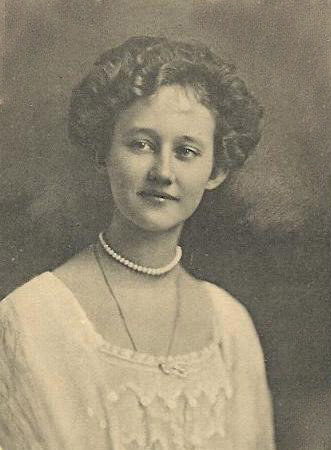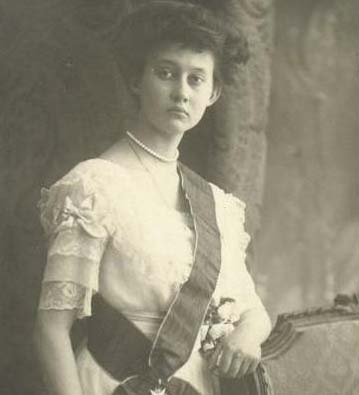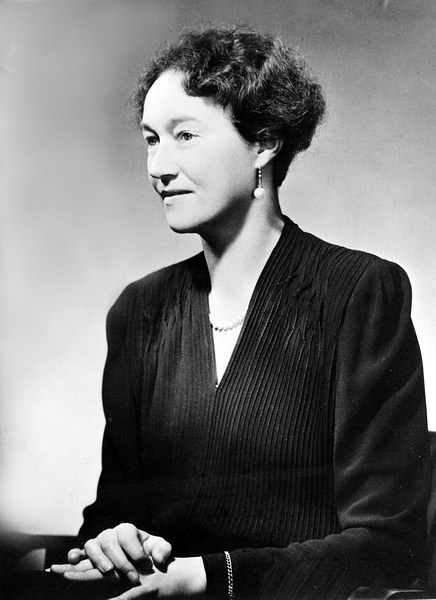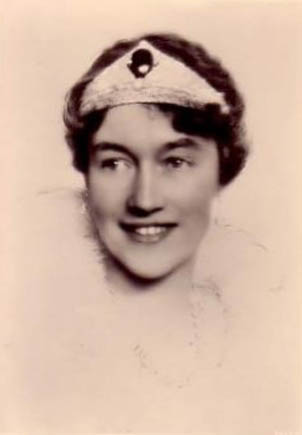<Back to Index>
- Grand Duchess of Luxembourg Maria - Adelheid, 1894
- Grand Duchess of Luxembourg Charlotte, 1896
PAGE SPONSOR


Maria - Adelheid or Marie - Adélaïde, Grand Duchess of Luxembourg (Luxembourgish: Maria Adelheid Theresia Hilda Antonia Wilhelmina vu Lëtzebuerg, French: Marie Adélaïde Thérèse Hilda Antonie Wilhelmine, born: Marie Adelheid Thérèse Hilda Wilhelmine von Nassau - Weilburg; 14 June 1894 – 24 January 1924) was the reigning Grand Duchess of Luxembourg from 1912 to 1919. Marie - Adélaïde ruled for less than 7 years and due to her unpopularity, she was forced to abdicate in favor of her sister Grand Duchess Charlotte.
Marie - Adélaïde was born on 14 June 1894 in Berg Castle as the eldest child of Grand Duke William IV of Luxembourg and Infanta Marie Anne of Portugal. Her maternal grandparents were King Miguel of Portugal and Princess Adelaide of Löwenstein - Wertheim - Rosenberg.
Since her father had six daughters and no sons, he proclaimed Marie - Adélaïde as the heir presumptive on
10 July 1907, in order to solve any succession crisis. Thus, when her
father died on 25 February 1912, she succeeded to the throne at the age
of 17, becoming the first reigning Grand Duchess of Luxembourg. Her
mother served as regent until
Marie - Adélaïde's eighteenth birthday in June 1912. She was
also the first sovereign of Luxembourg since 1296 to have actually been
born within the country.
Marie - Adélaïde was highly interested in politics and took an active part in the government and the political life of the Grand Duchy. She was a devout Catholic, with strong religious convictions and political views. On the day of her ascension to the throne - 25 July 1912 - she refused to sign a new law reducing the role of Catholic priests within the education system.
With the outbreak of the First World War in 1914, the German Empire violated
the neutrality of Luxembourg by invading the country on 2 August.
Although Marie - Adélaïde issued a formal protest, this did
nothing to prevent the military occupation of Luxembourg. She decided
not to resist the occupying army, but tried instead to maintain her
country's neutrality throughout the War. However, during the War she
developed a rather cordial relationship with the German occupiers, and
her political opponents in Luxembourg painted her as pro - German.
After the end of the War she was harshly criticized for her attitude and the perception of the Grand Duchess as pro - German led the French government to declare: "The French Government does not consider it possible to have contact or negotiations with the Government of the Grand Duchess of Luxembourg, whom it considers as gravely compromised…" Although she had not done anything unconstitutional, voices in Parliament began to demand her abdication in January 1919. At the same time, prominent political figures in both neighboring France and Belgium espoused annexationist plans towards the Grand Duchy and thus had a vested interest in further discrediting Marie - Adélaïde. Under intense national and international pressure, and after consulting with the Prime Minister, the 25 year old Grand Duchess decided to abdicate, doing so on 14 January 1919. She was succeeded by her younger sister, Charlotte.
After her abdication Marie - Adélaïde went into exile by traveling through Europe. She entered a Carmelite convent in Modena, Italy, in 1920. Later, she joined the Little Sisters of the Poor in Rome,
taking the name "Sister Marie of the Poor". Her worsening health did
not allow her to remain a nun, however, and she eventually had to leave
the convent. She then moved to Hohenburg Castle in Bavaria, where she died of influenza in 1924. On 22 October 1947, her body was interred in the Ducal Crypt of the Notre - Dame Cathedral in the city of Luxembourg.


Charlotte, Grand Duchess of Luxembourg (Luxembourgish: Charlotte Adelgonde Élise / Elisabeth Marie Wilhelmine vu Lëtzebuerg; Schloss Berg, 23 January 1896 – Schloss Fischbach, 9 July 1985) was the reigning Grand Duchess of Luxembourg from 1919 to 1964.
Charlotte was the second daughter of William IV, Grand Duke of Luxembourg, and his wife Infanta Marie Anne of Portugal. Her maternal grandparents were King Miguel of Portugal and Princess Adelaide of Löwenstein - Wertheim - Rosenberg.
When her older sister Marie - Adélaïde, Grand Duchess of Luxembourg, who had succeeded their father, was forced to abdicate on 14 January 1919, Charlotte became the one who had to deal with the revolutionary tendencies in the country. Unlike her sister, she chose not to meddle with its politics.
In a referendum about the new constitution on 28 September 1919, 77.8% of the Luxembourgish people voted for the continuation of a Grand Ducal monarchy with Charlotte as head of state. In this constitution, the power of the monarch was severely restricted.
During the German occupation of Luxembourg in World War II, Charlotte, exiled in London, became an important symbol of national unity.
On 6 November 1919 in Luxembourg, she married Prince Felix of Bourbon - Parma, a first cousin on her mother's side. (Both Charlotte and Felix were grandchildren of King Miguel of Portugal through
his daughters Maria Anna and Maria Antonia, respectively). With the
marriage, their lineal descent was raised in style from Grand Ducal Highness to Royal Highness. The union produced six children
During the Second World War the grand ducal family left Luxembourg shortly before the arrival of Nazi troops. Luxembourg's neutrality was violated on 9 May 1940, while the Grand Duchess and her family were in residence at Colmar - Berg. That day she called an extraordinary meeting of her leading ministers, and they all decided to place themselves under the protection of France, described by the Grand duchesses as a difficult but necessary decision. Initially the family took up residence at the Château de Montastruc in south - western France, but the rapid advance of the German forces into France followed by French capitulation the next month caused the French government to refuse any guarantee of security to the exiled Luxembourg government. Permission was received to cross Spain provided they did not stop en route, and the Grand Duchess with her ministers moved on to Portugal.
The Germans proposed to restore the Grand Duchess to her functions, but Charlotte was mindful of her predecessor's experiences of remaining in Luxembourg under German occupation during the First World War, and refused the offer. By 29 August 1940 Grand Duchess Charlotte was in London where she began to make supportive broadcasts to her homeland using the BBC. Later she traveled to the United States and to Canada. Her children continued their schooling in Montréal while she had several meeting with President Roosevelt who encouraged her itinerant campaigning across the country in support of his own opposition to isolationism which was a powerful political current until the Pearl Harbor attacks. In the meantime Luxembourg, along with the adjacent French Moselle department, found itself integrated into an expanded Germany under the name Heim ins Reich, which left Luxembourgers required to speak German and liable for conscription into the German army.
In 1943 Grand Duchess Charlotte and the Luxembourg government established themselves in London: her broadcasts became a more regular feature of the BBC schedules, establishing her as a focus for the resistance movements in Luxembourg.
Charlotte's younger sister Princess Antonia of Luxembourg had in 1921 married the last crown prince of Bavaria and in 1939 the couple had been exiled from Germany. In 1944, living now in Hungary, Princess Antonia was captured when the Germans invaded Hungary and found herself deported to the concentration camp at Dachau, being later transferred to Flossenbürg where
she survived torture but only with her health badly impaired. Meanwhile
from 1942 Grand Duchess Charlotte's eldest son, the future Grand Duke Jean served as a volunteer in the Irish Guards which was a British army regiment, for historical reasons he was known at this time as "Lieutenant Luxembourg".
On 12 November 1964, she abdicated in favor of her son, Prince Jean, who then reigned until 2000.
Charlotte died on 9 July 1985, from cancer. She was interred in the Ducal Crypt of the Notre Dame Cathedral in the city of Luxembourg.
Had she not abdicated, she would have reigned for a total of 66 years, 173 days.
She was the 366th Grand Cross of the Order of the Tower and Sword.